This post is a how-to guide to public transport in Berlin.
Berlin's public transport system is extensive and can be intimidating, but it doesn't have to be.
Take it from a local, the system is managable for visitors or newcomers to the city.
I include tips on tickets, tourist travel passes (including the Deutschland Ticket), an explanation of the zone system, and an overview of transport options.
- AB vs. BC vs. ABC Zones
- Travel Passes and Tourist Cards
- Single-Ride Tickets
- APPs
- S-Bahn, U-Bahn, Regional-Bahn, Bus + Tram
- How to Get to/from BER Airport
(Read this post auf Deutsch).
Berlin ABC Fare Zones
Before I mention tickets and passes, it's best to get an overview of the fare zones.
Berlin’s transportation network is divided into 3 fare zones (A,B,C), which you could see on the map below.
Any ticket or pass that you buy will either be an AB, BC, or and ABC ticket or pass.
Zone A, where the overwhelming majority of tourist sights are located, makes up the center of the map.
The zone is essentially formed by the S-Bahn Ring lines (S-41 and S-42).
Click on the map to enlarge it.
Zone B (the grayish-blue shaded area) surrounds the outer urban ring.
Zone C, covers the greater Berlin area, including the State of Brandenburg.
If your accommodation is rather central and you are looking to see the main typical sights in the city, an AB ticket usually suffices.
However, there are 3 reasons a visitor might purchase the ABC or the BC tickets.
First, if you are traveling e.g. from or to Berlin Brandenberg Airport (BER), you will at least need to have Zone C on your ticket to and from the airport.
Be sure to read our post on ground transportation to and from BER.
The other two main reasons are you would like to visit Sachsenhausen Concentration Camp or to visit Potsdam, both of which are located in Zone C.
BERLIN TRANSPORT PASSES AND TOURIST OPTIONS
First things first, if you are planning to use Berlin's mass transit at least 3 times in one day, you will probably be better served to have a pass.
Do yourself a favor and buy a travel pass. Just 3 rides a day usually makes the pass superior to purchasing single tickets.
Passes also let you take up to 3 children ages 6 - 14 for free. This is not available with single tickets.
Children 5 and younger always ride for free in Berlin.
And with passes, it’s a one time purchase and a one time validation - and less chance of riding with no fare.
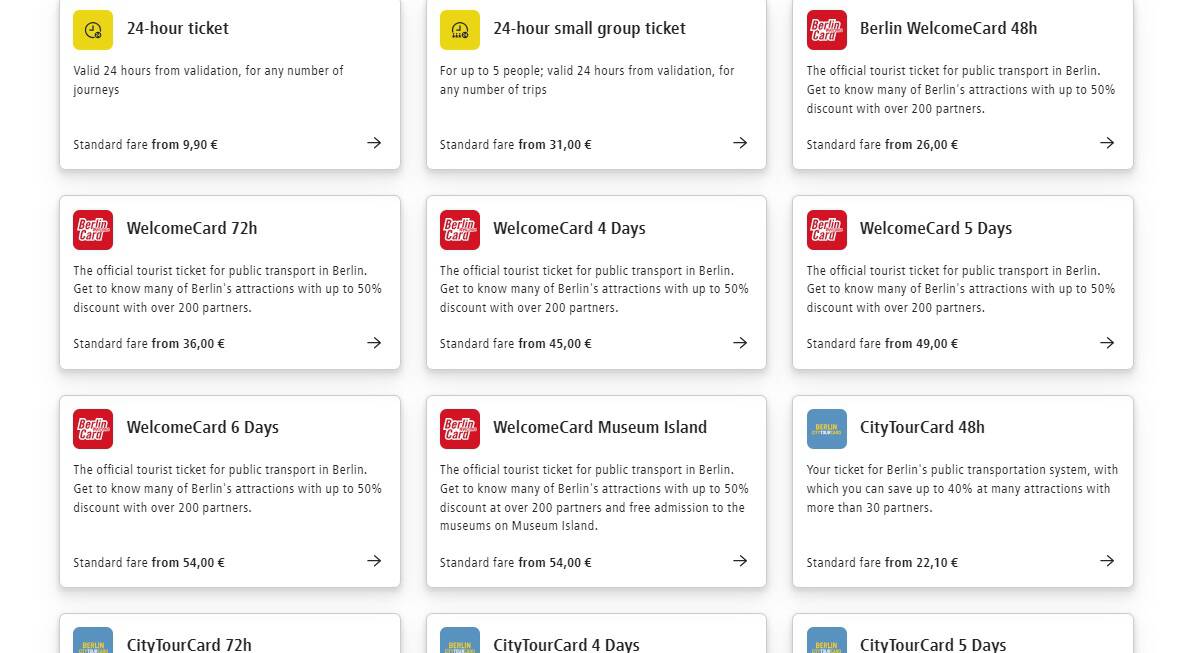
The BVG, Berlin’s public transport agency, offers 24-hour, 7-Day, and monthly travel passes.
2, 3, 4, 5, 6-day passes are available as a part of the Berlin WelcomeCard or Berlin CityCard, 2 tourist discount passes available in the city.
I discuss tourist discount passes in a following section.
And if you are flying into Berlin Brandenburg Airport (BER) and you decide on travel pass, just get the ABC pass.
It's likely going to be the most efficient choice for you, and for the extra few Euros, it eliminates all of the guesswork.
Give you brain a holiday too.
24-Hour Pass
- €9.90 (concessions €6.50) for zones (AB)
- €10.40 (concessions €6.80) for zones (BC)
- €11.40 (concessions €7.00) for zones (ABC)
7-Day Pass
- €41.50 (no concessions) for zones (AB)
- €42.50 (no concessions) for zones (BC)
- €49.00 (no concessions) for zones (ABC)
BERLIN WELCOME CARD AND OTHER TOURIST TRAVEL PASSES
Many visitors to the city end up with a tourist discount pass.
Several Berlin tourist discount passes, most notably the Berlin Welcome Card, include either AB or ABC-zone travel cards as a part of their packages.
The passes are available in 2, 3, 4, 5, 6-day versions, thus filling a gap between the official 24-hour and 7-day unlited travel passes offered by the BVG (Berlin's Public Transport Agency).
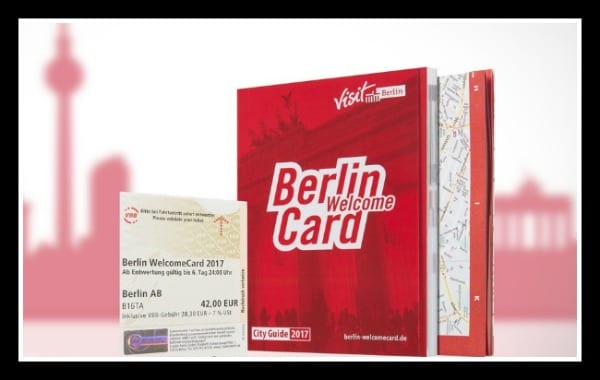
These passes also offer the holder either free or discounted entry to popular Berlin attractions and tours and also include discounts on restaurants.
Particularly discount cards, such as the Berlin Welcome Card, are almost as inexpensive as buying daily unlimited travel passes.
We recommend that you consider one of these options.
DEUTSCHLAND TICKET
You may have also heard about the Deutschland Ticket.
Essentially, this is a monthly pass that allows you to travel on any mode of public transport, other than ICE and IC trains, throughout Germany for one flat rate.
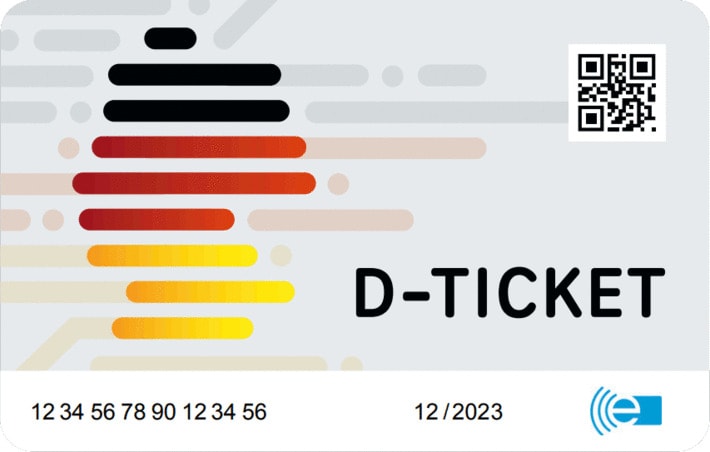
At the time of filming, that rate is just €49.
This is definitely the option you would want to consider if you are visiting any other cities in Germany.
A few caveats though.
First, the ticket is for you only. You can’t take anyone else aged 6 or older with you. They will need their own tickets.
Also, it’s a subscription pass that is monthly and starts on the 1st day of each month.
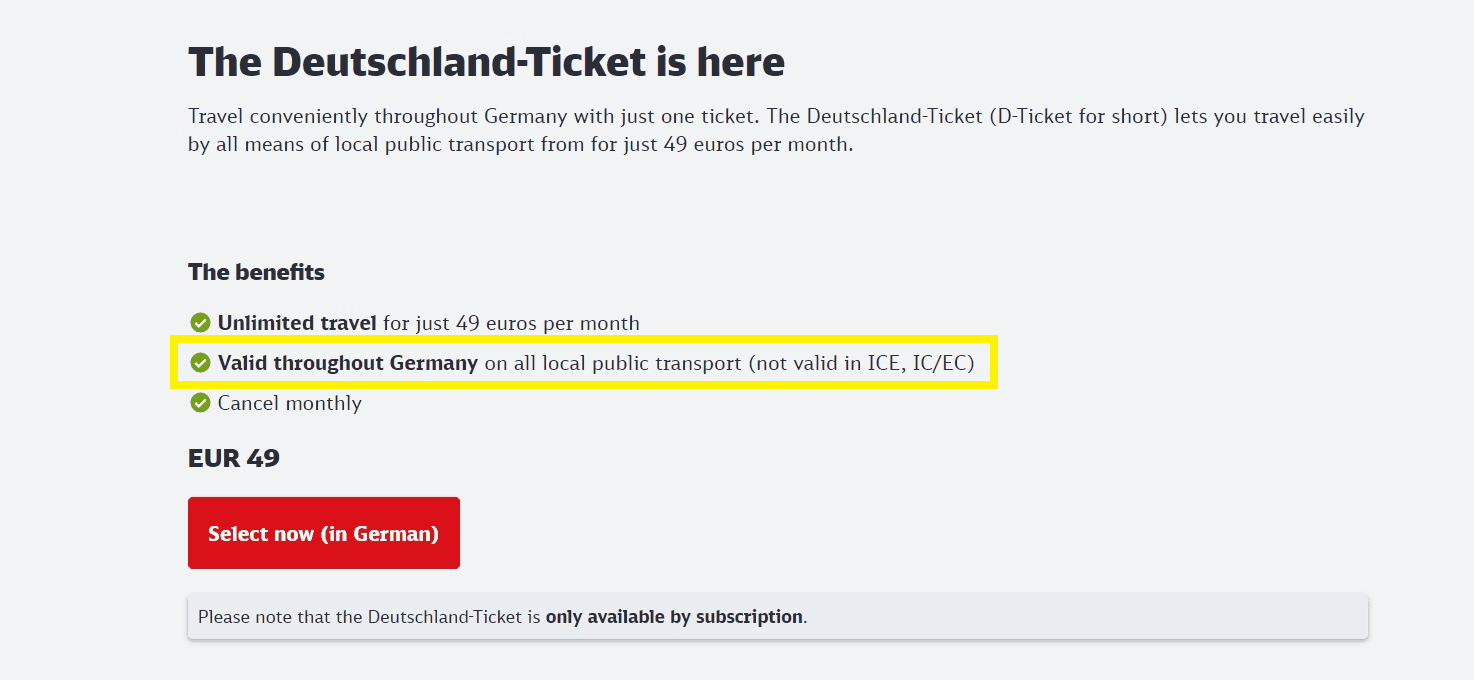
You will need to cancel the subscription when you no longer need it.
And, you have to subscribe online by the 20th day of the month before the subscription starts.
Basically, you will need to do a bit of pre-planning to utilize this option.
Also, this is an experimental pass, so it’s unknown if it will be here a few years into the future.
Click here for more information on the Deutschland Ticket.
Single Tickets One-Way (2 hours)
- €3.50 (concessions €2.20) for zones AB
- €4.00 (concessions €2.70) for zones BC
- €4.40 (concessions €3.20) for zones ABC
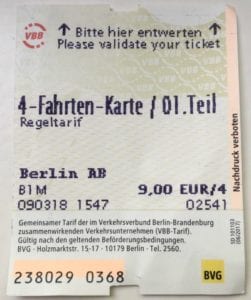
Concessions are for children aged 6-14, seniors, and those with disabilities.
For occasional travel, the single ticket is fine, but it's probably better to buy the 4-trip tickets, which are actually 4 single tickets costing you only a total of €10.80 (AB), a savings of €2.60.
But more importantly, it will save you from stopping at the machines each time you ride.
There are cheaper short-trip-tickets called Kurzestrecke Karten, which allow you to ride the S and U-Bahns for 3 stops and buses and trams for 6 stops and cost €2.40 (€1.90 concessions) per ticket.
However, the savings may not be worth the risk if you decide you want to travel further.
EXTENSION TICKETS
You can also purchase extension tickets.
Many visitors to Berlin purchase either AB zoned tickets or AB zoned passes, and then purchase extension tickets to travel to or from zone C, as mentioned above to visit Sachsenhausen Concentration Camp or to visit the City of Potsdam.
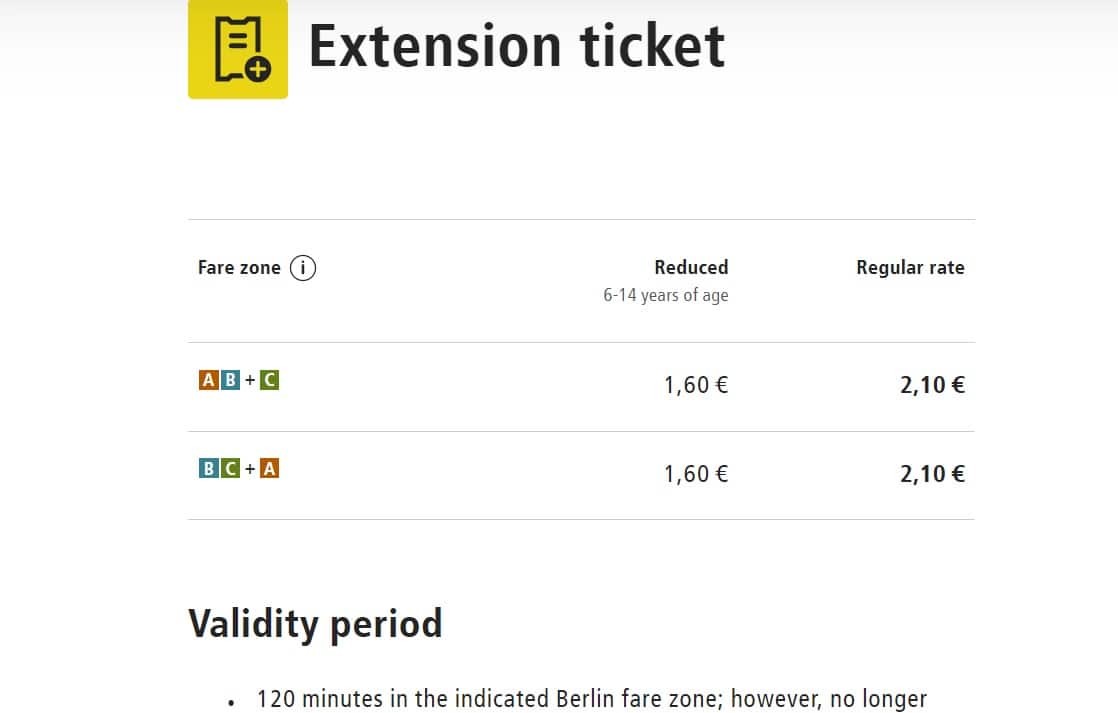
So, for example, if you hold a 72-hour Berlin WelcomeCard with an AB Zone travel pass, and you would like to travel to Potsdam for one day, you could just purchase two Zone C ticket extensions, one for the trip there and one for your return journey.
And for just a tiny bit more, you can get a full day extension ticket.
TIP: With that said, if you end up deciding on a pass and you are flying into and out of Berlin Brandenberg Airport (BER), I recommend purchasing an ABC pass rather than an AB pass and adding extention tickets.
BICYCLE TICKETS
In case you are renting a bike and want to bring it onto public transit, be aware that bicycles need tickets too.
You can get a single ticket or a daily pass to bring a bike onto regional trains, the S-bahn, and U-bahn - and on trams marked with bicycle symbols
PUBLIC TRANSIT APPs
Do yourself another favor and download one of the city’s public transport apps.
But, before I recommend some apps, let me clear up something that confuses many visitors (and locals).
There are 2 mass transit authorities operating in Berlin, the BVG, or the Berlin mass transit Agency) and the VBB, or the Berlin and Brandenburg mass transit agency).
The BVG runs the U-bahn, bus, and tram systems operating in zones A,B,C.
The VBB runs the S-bahn and regional trains running through zones A,B,C and beyond.
They both have their own ticket systems and machines.
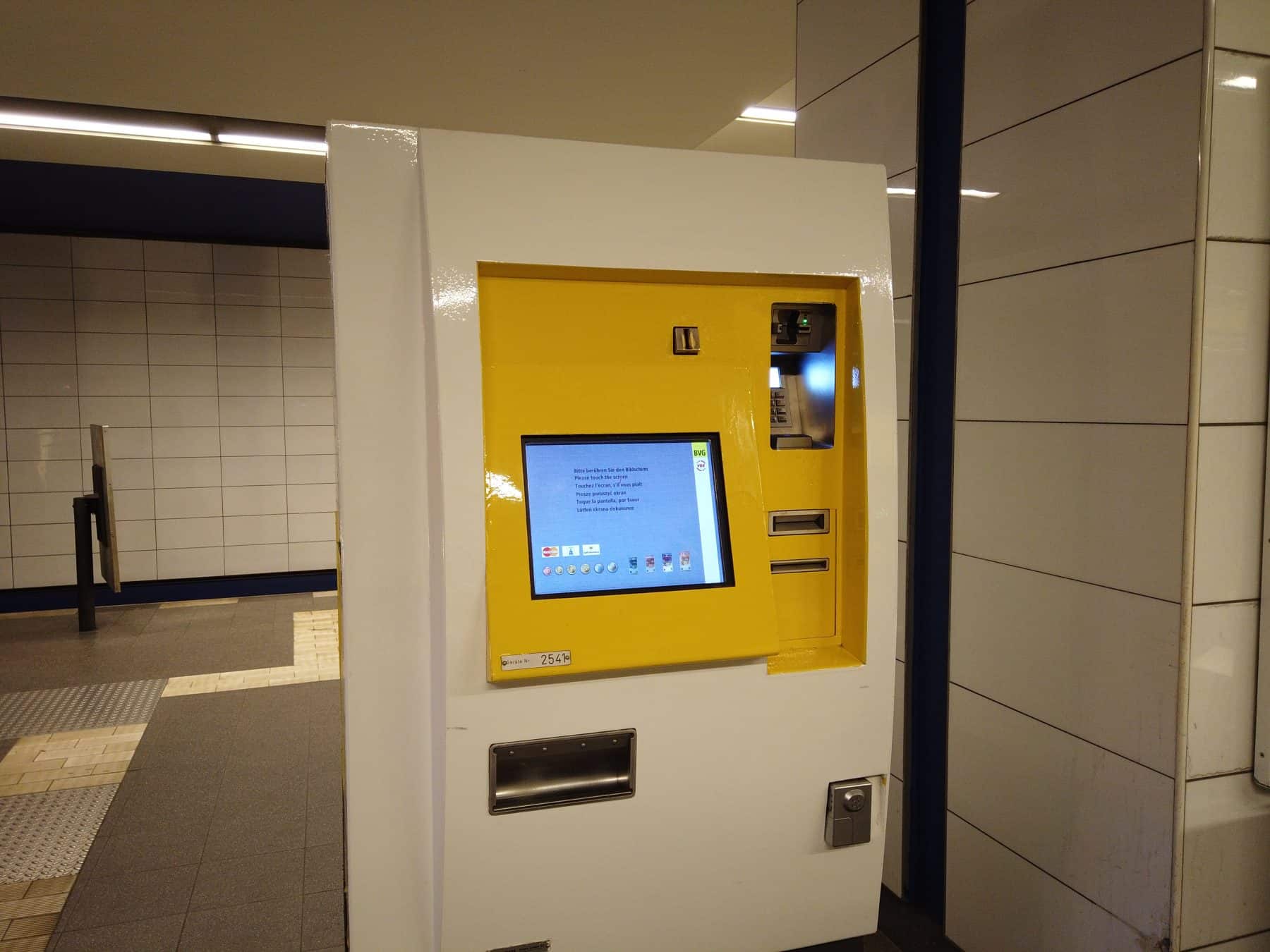
The BVG are yellow and found mostly at U-bahn stations and some tram stops.
The VGG are red and found mostly at S-bahn and regional train stations.
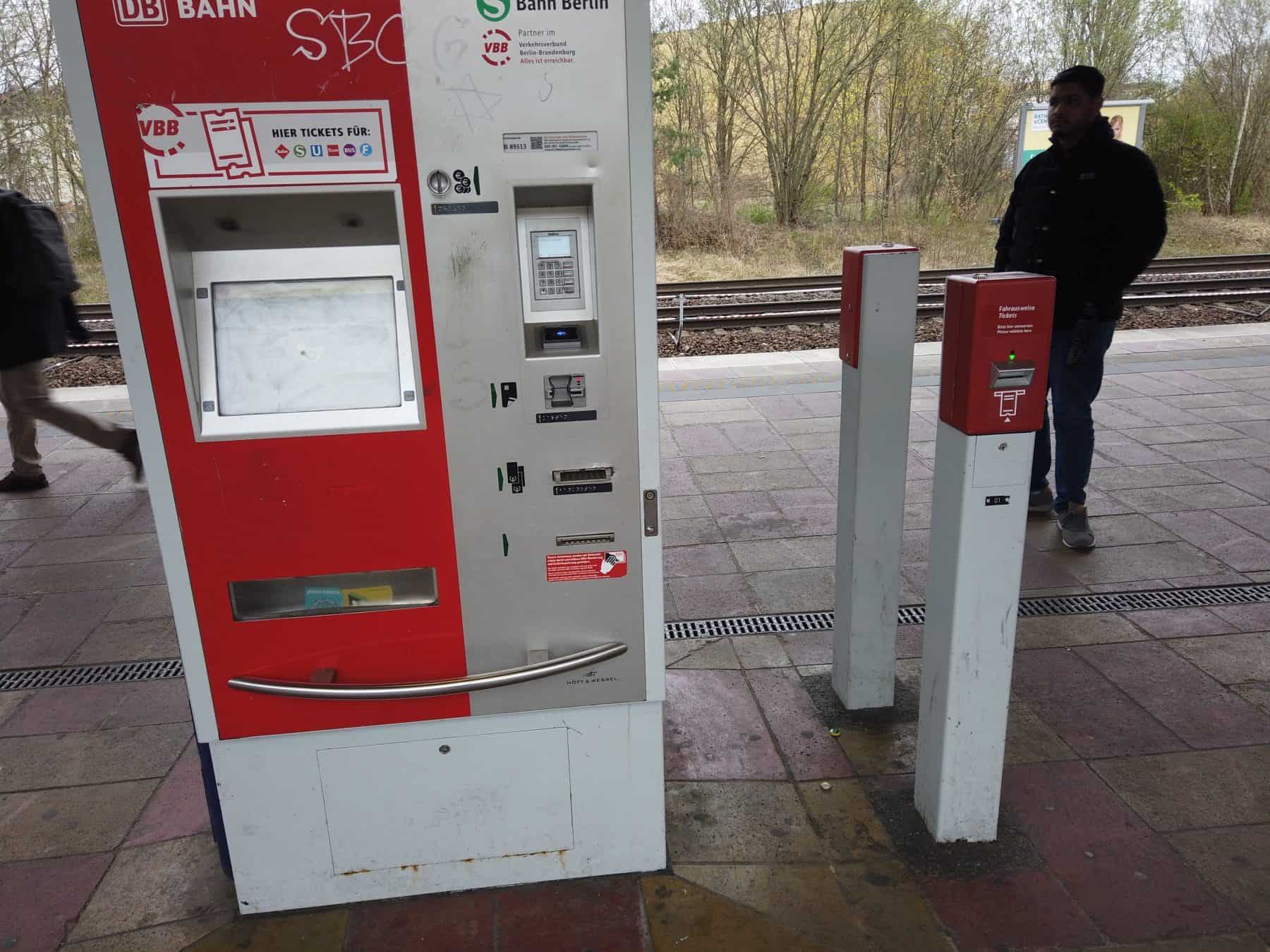
The main practical difference is that VGG offers tickets outside of the greater Berlin areas of Brandenburg.
Both ticketing systems are integrated, so as long as you purchase and validate the proper ticket, it doesn’t matter from which service you purchased it.
With that said, we recommend using the BVG apps if you are staying in the BVG area.
The BVG has 3 apps which all have English language options.

You will need to register with all 3 and set up payment, but this is easy and relatively straightforward (for Berlin standards, at least).
The first is the BVG ticket app. It’s strictly for purchasing and validating single tickets and travel passes, including the tourist passes I mentioned before.
The second app is the BVG Travel app. This one focuses on trip planning, departures and maps.
But, it can also handle ticket and pass purchases and validation.
This app is very popular with members of our Berlin Travel Tips Facebook group.
The third app is called JELBI. I prefer this one as a local.
Jelbi app is similar to the previously mentioned app, but it also includes car-sharing, taxis, E-scooters, bikes, and e-mopeds.
There are a few things to keep in mind before riding.
First, be sure to have a ticket and validate it before getting on board an S-Bahn, U-Bahn, or Tram!
If using an app, validation is a press of a button.
If using paper tickets, there are small validation machines on the platforms next to the ticket machines (see the image below) where you can stamp your tickets to activate them.
There are no validation machines on U and S-Bahn, but there are on buses and trams.
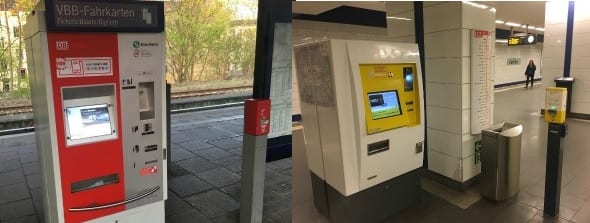
The BVG (Berlin Verkersbetriebe - Berlin Public Transport System) has a ticket app where you can buy and validate your tickets.
But, you might prefer the Jelbi App, which combines ticket purchasing and navigation, including bus, train, e-moped, e-scooter, bike, car, taxi, and ridesharing.
There are random ticket checks on the trains, and these lads who check, work on commission, so they won’t care much that you just didn’t know better.
Getting caught without a ticket will cost you €60 or more and some hassle.
Second, the ticket machines for S and U-Bahn look different.
The S-Bahn machines are blue and red and the ticket machines for the U-Bahn are yellow and white (see the image above).
But the user experience is the same and it's very easy to figure out. There are multiple languages to choose from including English.

It is possible to buy a ticket on a bus from the driver and there are vending machines on Berlin trams.
But, be sure to have either exact change or small bills for the bus, as there is a limit on how much change you will get.
On trams, you can only pay with coins.
Second, some machines do not accept international credit cards, and sometimes they don't accept any credit cards.
So, be sure to have cash with you as a backup (or take our advice and use one of the apps or get a tourist pass).
80% of S+U stations have an elevator or handicapped access, and getting onto a bus or tram with a wheelchair or stroller is not a problem.
S-Bahn, U-Bahn, Regional Trains, Trams, and Buses
Don’t be taken aback by the different types of transportation. There are many, but it's really not hard to grasp after some exposure.
And in addition to the 4 we highlight here, you can also use the Regional Bahn (RB) and Regional Express (RE) suburban trains inside of Berlin. They are also included on any Berlin public transport ticket.
The only types of trains not included are Intercity Express (ICE) and Intercity (IC) trains, which connect major cities in Germany.
As we mentioned already, they are all covered under the BVG (Berlin Transportation Service).
So, with a valid ticket or a valid tourist pass, you can ride them all and transfer between them.
Berlin’s transportation system works day and night.
The trains and buses run every 10 - 20 minutes during the daytime, and in the center, trains run more frequently.
At night the service is a bit more limited, with waits of 20 - 30 min between trains and buses.
On weekdays, S-Bahn and U-Bahn trains run from approximately 4:30 am until 1:00 am the next day, but there are certain night buses that take on the U-Bahn routes.
On weekends both run 24 hours.
S-Bahn
The S-Bahn is a train/subway system to master long distances in a short time – like an express subway.
There are 16 S-Bahn lines and 166 stations in the system.
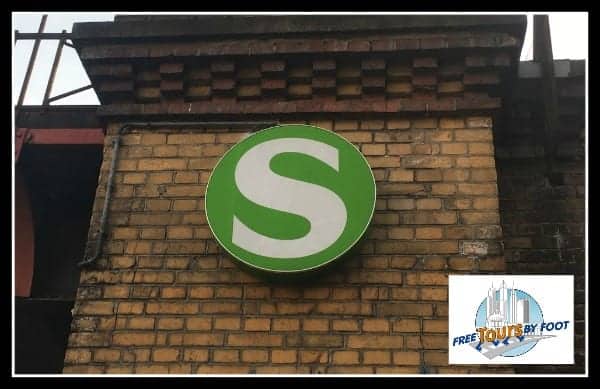
The lines are marked e.g. “S1” and stations are marked with a large green S.
It operates from roughly 04:30 am until 01:30 am on weekdays and 24 hours a day on weekends.
Trains run at 5, 10, or 20-minute intervals depending on the time of day. Overnight on weekends means 30 minutes between trains.
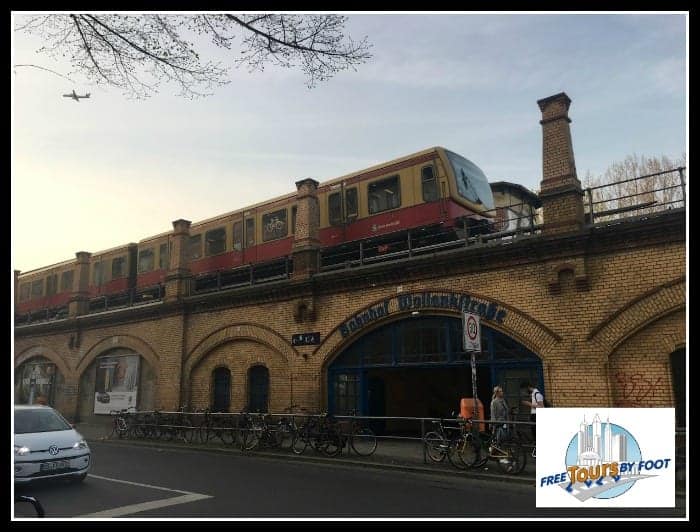
And to best understand its routes, you should think of it in 3 parts, especially when it comes to central Berlin travel.
First, there is the ring line (or the circle line) that encircles the heart of Berlin.
This ring line essentially forms the structure of Zone A, which is where probably 80% of tourist sights are located.
Second, the S-Bahn has an east-west corridor, which connects the western and eastern ends (Westkreuz + Ostkreuz) of the Ring and extends out in both directions.
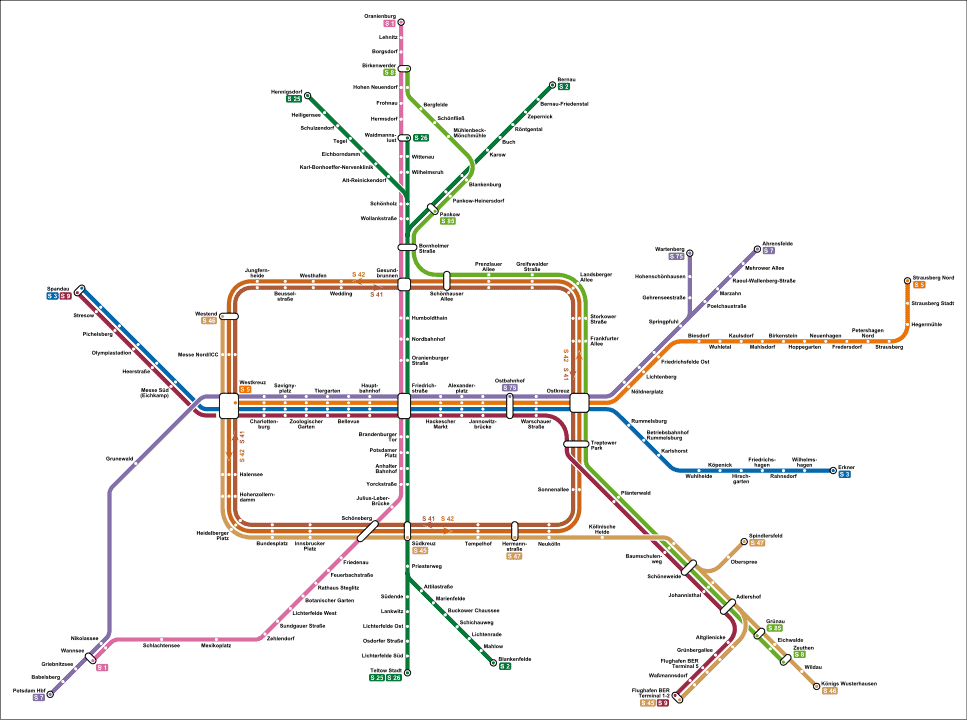
This east-west corridor travels through the center of Mitte and includes stations such as Hauptbahnhof, Friedrichstrasse, Alexanderplatz, and Charlottenburg.
And third, the S-Bahn has a North-South corridor, which connects the southern and northern ends of the Ring (Sudkreuz and Gesundbrunnen) and extends in both directions.
This north-south corridor includes the S-Bahn lines that go underground in Mitte.
Once outside of the Ring, the lines from all corridors go to the outer neighborhoods or cities outside Berlin like Potsdam, the capital of the state of Brandenburg.
U-Bahn
The U-Bahn is the classic subway (sometimes elevated though) for more local travel.
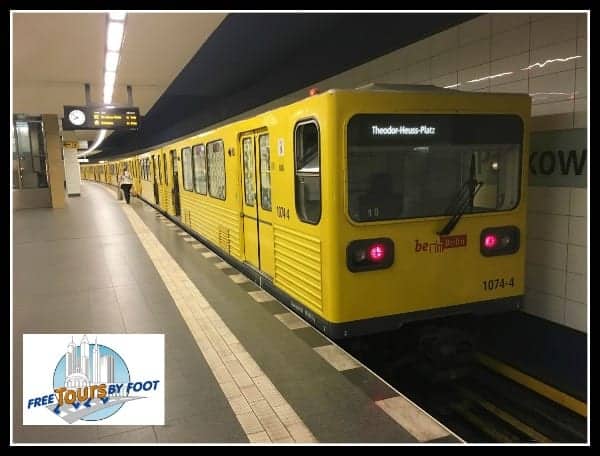
There are 175 U-Bahn stations, and the 9 subway–lines crisscross Berlin and some lead to places outside the city as well.
The lines generally run either north-south or east-west.
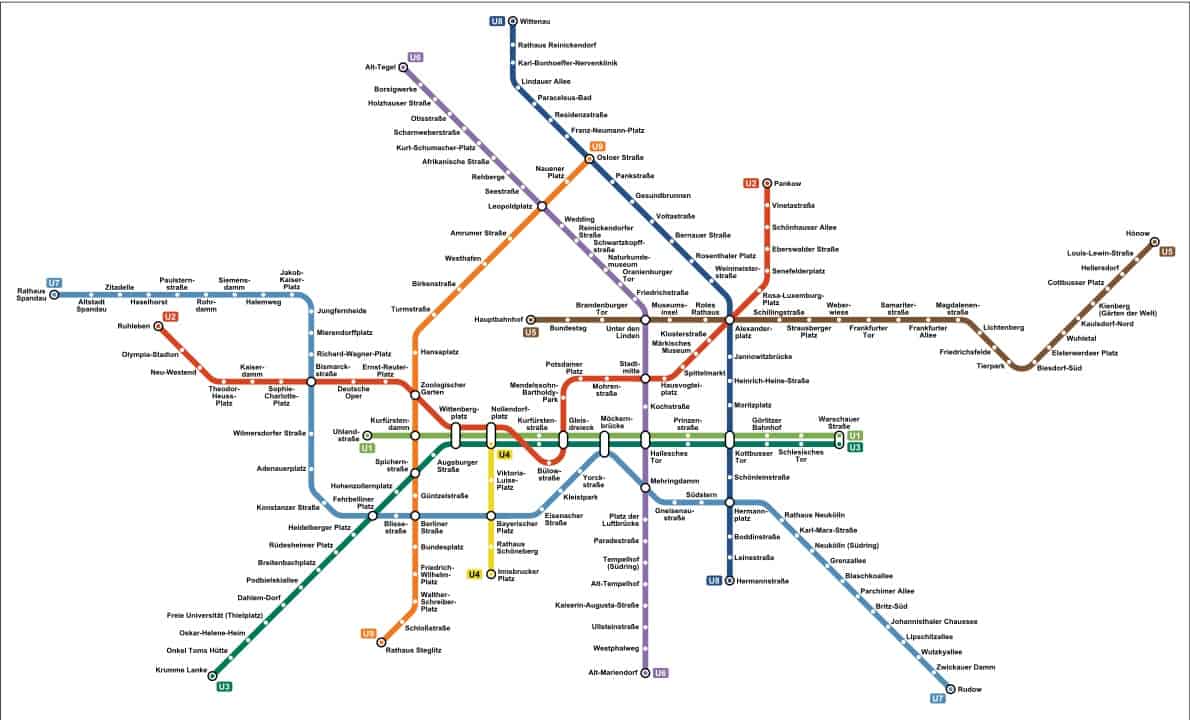
Though a few lines zig-zag almost diagonally.
U-Bahn trains run 24/7 on Fridays through Sundays and the nights before official holidays.
They run every 2-5 minutes at rush hours and then roughly every 5-10 minutes at other times.
U-Bahn lines are named, for example, “U1” or "U2" and so forth.
And U-Bahn stations are marked with either a standalone U or a U followed by the name of the station, as in the image below.

Some stops have both a U-Bahn as well as an S-Bahn station, and these are usually connected to each other on the inside.
Regional Trains
Also operating within Berlin's public ABC zone transport system are regional trains, Regional Bahn (RB), and Regional Express (RE).
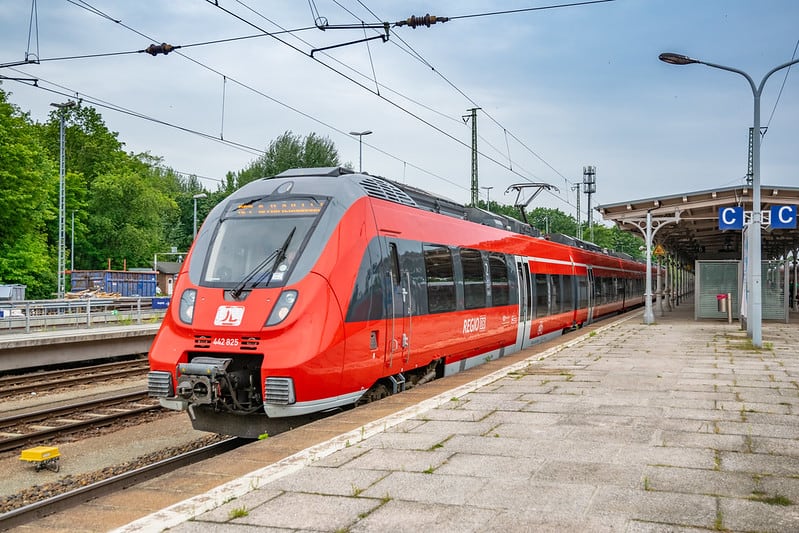
442 825 DB Regio RE7 Berlin Wannsee 26.08.17
These are the red trains that run express routes into and around Berlin and are intended as commuter trains for suburban residents.
These trains usually only stop at big stations such as Hauptbahnhof, Ostkreuz, and larger commercial areas, so if you are headed to one of these, these trains will be your fastest option.
As long as you are within Berlin's 3 zones, any ticket or pass that you buy will include these trains.
This also includes the Flughafen Express (FEX) train, and the airport express train from BER Airport.
Buses
Berlin runs an extensive, efficient, and reliable bus service throughout the city.
Berlin buses run from 6:30 am – 12:30 am when the “Nachtbus” runs 12:30 am – 4:30 am. There are also express buses.
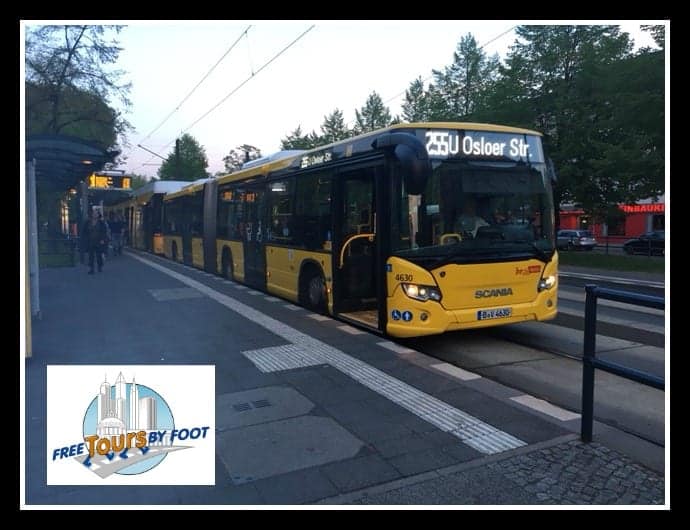
Bus routes generally cover areas not well serviced by other forms of public transportation, and they supplement the U-Bahn and S-Bahn systems by stopping at these stations.
None of the following details really matters much for visitors to Berlin, since navigation apps will tell you what bus to take, but it's still good to know.
Buses that start with the letter M are called Metro Buses. These 17 bus lines run the most per hour.
Metro Bus lines operate 24 hours a day, 7 days a week, generally at 10 min intervals, and even more frequently during peak times.
The buses don't have an M and are "regular buses" usually with lines numbered in the 100's or 200's, for example, 155.
These buses don't run as frequently, usually every 10-20 min during the day.
Night Buses
At night, some of these regular bus lines are replaced by night buses marked e.g. “N1”.
All night buses (including the M lines) run at 30 min intervals. Some of the night buses are replacements for the U-Bahn lines when those stop for the night.
Express Buses
There are also express bus lines in Berlin, which make fewer stops than regular or metro buses.
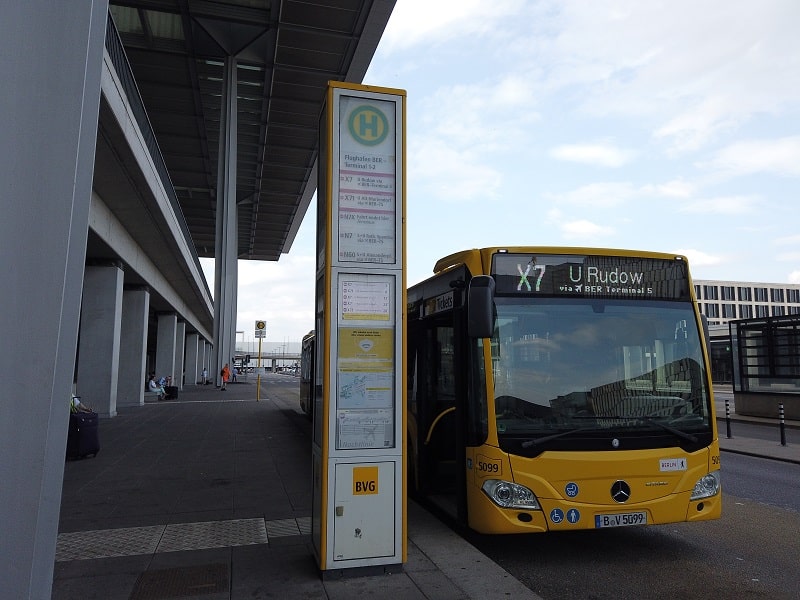
Berlin express buses are denoted with the letter X, such as the X7 to U-Bahn Rudow in the image above.
There are 13 express bus lines, but only a few that might be of interest to visitors to Berlin.
These are the X7 and the X17. These are the buses that service the Berlin-Brandenburg Airport.
Note: There are no bus options that take you directly from the airport to Berlin city centre. We go into more detail about them in our BER Airport post.
Tourist Bus Lines
Bus 100 and Bus 200 are two lines (often double-deckers) whose routes unite many of the interesting tourist attractions in Berlin.

Both lines connect Alexanderplatz and Berlin Zoologischer Garten.
We have a post where we explain how these two lines can be used as do-it-yourself hop-on-hop-off bus tours.
Trams (Street Trains/Light Rail) - Die Strassenbahn
In the 1950s, people were very optimistic about the future of automobile transportation.
So, in the former West Berlin trolleys were seen as outdated and abandoned.
In the former East Berlin, the “capital of the German Democratic Republic”, the authorities were not so fast.

The system had failed to provide its people with enough cars anyway and thus public transport was more important and the trolley system was kept alive.
In the Eastern neighborhoods, you find a dense system of trolley lines “die Straßenbahn”.
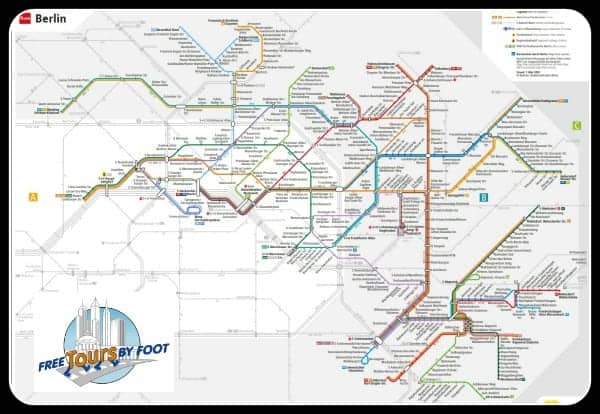
Like with buses, there are regular trams and metrotrams, and both generally operate routes that have limited access to U and S-Bahn lines.
There are 13 regular tram lines. Regular trams generally run every 10-20 minutes.
The metrotrams (marked with M) operate 24 hours a day and run more frequently than regular trams, roughly every 10 min during the day.
After 00:30 (12:30 am), metrotrams operate every 30 min.
The Strassenbahn works on the same ticket information we provided above and you can use all tourist passes as well.
But you can also purchase tickets inside of the trams from automated ticket machines. Be sure to have exact change in coins.
Related Posts:







